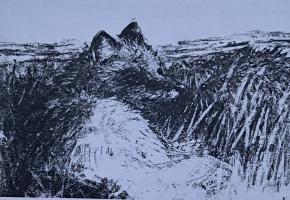Copy Link
Add to Bookmark
Report
Cider Digest #1931

Subject: Cider Digest #1931, 15 January 2015
From: cider-request@talisman.com
Cider Digest #1931 15 January 2015
Cider and Perry Discussion Forum
Contents:
Re: Attenuation (Andrew Lea)
Wassail (jejanicke)
RE: Attenuation ("Charles McGonegal")
Thank you. (SMB WEBER)
Taking Cider a little further into "Calvados" or Apple Brandy ("Mc Canna, ...)
Re: Attenuation (yeast supplier mistake) (Dick Dunn)
NOTE: Digest appears whenever there is enough material to send one.
Send ONLY articles for the digest to cider@talisman.com.
Use cider-request@talisman.com for subscribe/unsubscribe/admin requests.
Archives of the Digest are available at www.talisman.com/cider#Archives
Digest Janitor: Dick Dunn
----------------------------------------------------------------------
Subject: Re: Attenuation
From: Andrew Lea <andrew@harphill.co.uk>
Date: Wed, 14 Jan 2015 08:18:13 +0000
On 14/01/2015 04:06, Eric Pennell wrote:
> I am using yeast with attenuation ratings in the 63-70%
Hold on a minute. "Attenuation" is a brewing concept which has no place
in wine or cider making. It refers to the ability of the yeast to digest
complex malt-derived sugars such as maltotriose and higher oligomers
towards the end of fermentation after the primary glucose and maltose
are exhausted. These complex sugars do not occur in fruit juices. In
wine and cider all the natural sugars (sucrose, glucose and fructose)
are fully fermentable by all normal fermenting yeasts. The concept of
"attenuation" cannot be used in cider making.
Andrew Lea
nr Oxford, UK
www.cider.org.uk
------------------------------
Subject: Wassail
From: jejanicke <jejanicke@gmail.com>
Date: Wed, 14 Jan 2015 10:16:15 -0700
I will Wassail the Orchard on the evening of January 17 in gratitude of
last year's bumper crop.
Do any other cider makers practice this and with what results ?
Ole Joe
------------------------------
Subject: RE: Attenuation
From: "Charles McGonegal" <cpm@appletrue.com>
Date: Wed, 14 Jan 2015 12:59:43 -0600
Eric, usually the issue with cider is trying to get something other than
100% attenuation. Getting 100% (Or about 97%, say) is not hard. Ignore
what the brewing info about the yeast is - this is cider.
Deliberately getting 70% attenuation without doing something like bottle
pasteurization is a master level skill - and even then, it's not especially
shelf stable.
Charles
Aeppeltreow Winery.
------------------------------
Subject: Thank you.
From: SMB WEBER <weberscrossing9@gmail.com>
Date: Wed, 14 Jan 2015 14:44:37 -0500
Just wanted to thank many people who have answered numerous questions I've
asked.This board is a wonderful school for new cider makers. Thank you to
everyone who maintains it and keeps it going.
I can't respond this week, but will try to email some who have posted here
later since my questions are old territory for experienced makers, and
probably too much off the rails for others (e.g.: what about the yeast in
a honey bee's gut that it might deposit in orchards (*Dekkera intermedia,
in an Indian study cited on wikipedia); are honey bees' yeasts necessarily
spoilage yeasts in cider or mead?) The people who will get this question
later know who you
are.....................................................so be forewarned.*
*Many thanks,*
Susan
(aka SMB Weber)
------------------------------
Subject: Taking Cider a little further into "Calvados" or Apple Brandy
From: "Mc Canna, Keith" <kmccanna@dresden-is.de>
Date: Wed, 14 Jan 2015 21:27:00 +0100
I have been reading up on this process and I am very interested in trying
to turn a good batch of cider into a batch of "Calvados" The French seem to
get all the patented names. Hoping to put down about 50 L? If I can find
the right sized old brandy cask. It will definitely give us something else
to offer up at the bar in the future.
But here is what I don't understand. With cider it is extremely bad for the
cider to come into contact with metals as it leeches the metals out and
they end up in the cider contaminating it and the people that drink it.
(Don't get me wrong I do like heavy metals in my music but not in my cider.)
Yet those making Calvados (Cider spirits) are using Copper Stills and
distilling their cider??? How is it that the metals do not end up in the
Spirits? And since you are double distilling would not these metals become
further concentrated the second time around.
If they don't then its because the metals are too heavy to vapourize, but
then the residual left overs must be heavily contaminated with metals. If
so is there an environmental concern with their disposal?
And what type of ratio am I looking at if I plan to make a 50 L finished
batch how much cider would I need to run through the still. Because this
will affect the size of the still we have made or purchase? Any help with
these thoughts would be great and any further resources to read up on would
also be greatly appreciated.
Keith McCanna
Sachsen Cider Dresden GmbH. Germany
------------------------------
Subject: Re: Attenuation (yeast supplier mistake)
From: Dick Dunn <rcd@talisman.com>
Date: Wed, 14 Jan 2015 18:32:12 -0700
I'm sure others will point out to Eric that "attenuation" doesn't apply to
cidermaking. BUT I want to note that one well-known yeast supplier in the
US gives attenuation figures for its wine-mead-cider yeasts. They are just
plain wrong, but they're an ongoing source of confusion for new cidermakers
(so we have to keep going over the issue--here and on the Cider Workshop as
well).
I don't mean just that they're -theoretically- wrong; I've actually used a
couple of their yeasts. The "attenuation" was near-as-dammit 100%, just as
we'd expect.
- --
Dick Dunn rcd@talisman.com Hygiene, Colorado USA
------------------------------
End of Cider Digest #1931
*************************
























